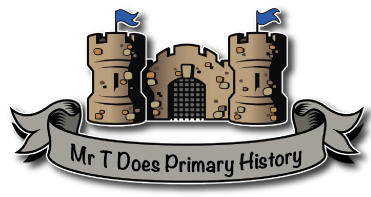

This is an update on the previous blog on this subject, which can be seen at this link, and aims to work alongside it. Someone said to me a few years ago my child doesn’t like writing but loves history – making them write will turn them away from history as well. My approach is still the same: keep history at the absolute forefront and use it as a vehicle to include appropriate pieces of writing with a clear purpose and aim.
The new framework’s clear intention is to put curriculum at the forefront of our minds. What we choose to teach is now crucial and what we record is also really significant as a record of what we have done. In a recent conference session led by OFSTED that I attended, they were critical of cross-curricular activities that don’t show subject progress. Does this mean we cant do them? Not at all! Cross-curricular links are really valuable but it is worth considering what they achieve. It’s also useful to remind ourselves that the books children write in will be one of the main evidence sources viewed so some great quality written work would really demonstrate what our curriculum is offering.
Framework available to view here: https://www.gov.uk/government/collections/education-inspection-framework
Writing in history needn’t be an onerous task not should it take up the vast majority of every lesson. By carefully selecting those opportunities, we can ensure they add value, meaning and fun to our curriculum.
How can we achieve this?
The Tiers of Language explained in the cake image have really clear applications to history and allowing the children to understand how to write in a number of different styles appropriately. Tier II is the academic style of writing that becomes increasingly more important as we move up through school and Tier III is their use of historical terminology and evidence. These does not in any way, shape or form have to be an extended piece of writing but it does give children a freedom to express their thinking clearly and really ‘show off’ what they’ve learned and understood.
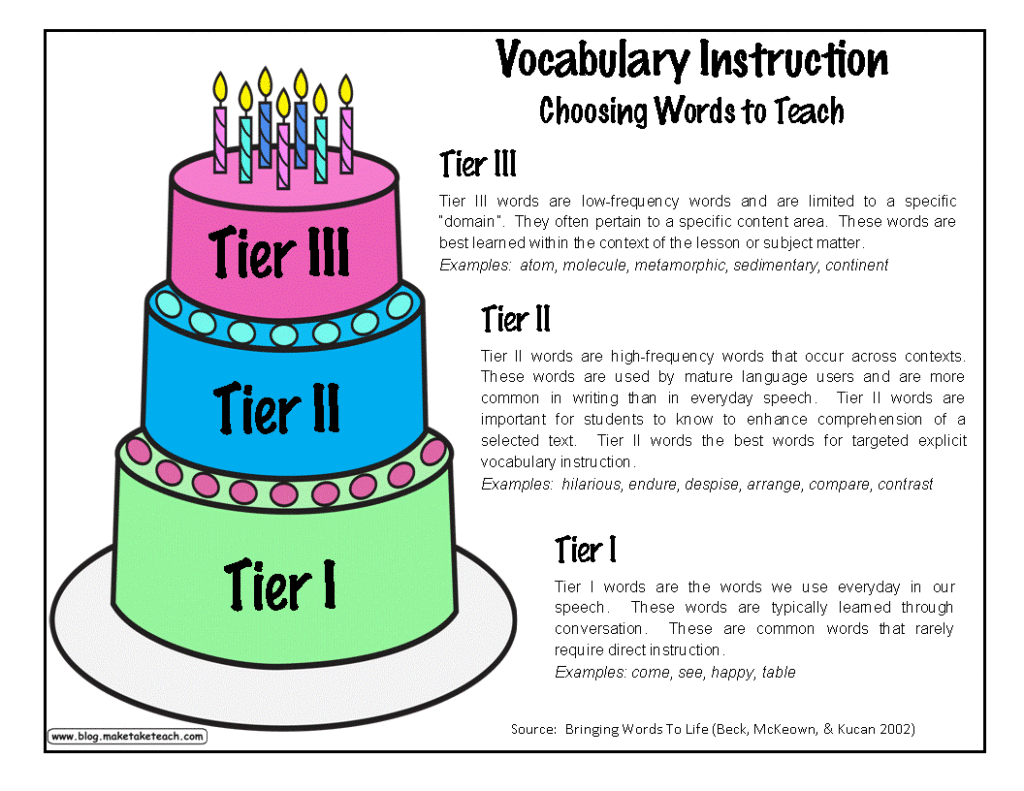
In writing, the children learn to use and apply what they have learned throughout the lesson and explain in the same way they’d be expected to in a reasoning lesson or as part of a comprehension.
It’s also really crucial to have a range of ways that children can write about their learning in lessons (as I’m sure we all know). These can take the form of short summaries of lessons through to more in depth explanations, arguments and debates. I always focus on putting more emphasis on how the children use their historical knowledge than their correct use of subordinating conjunctions, passive voice … I could go on. The aim is very definitely to keep history in the forefront of their minds and the attempt to include more complex writing skills is celebrated (accurate or not!).
Any number of English skills can be applied into historical writing with some thought and consideration. Always begin by teaching these skills independently of history lessons to ensure experience and the beginnings of fluent application. Once they have this foundation, we can extend this by linking the writing tasks to the academic style mentioned in the tiers of language. By making clear reference to the formal and academic style, we can tie in a range of SPaG skills. I tend to make use of the following very consciously:
The classroom environment is important as it will be full of the scaffolds that children need: word mats, working walls… etc but it’s far more important for them to focus on the history knowledge. Cloze procedures, sentence starters modelling the required English skills and notes from the lesson recorded centrally on the board or sugar paper.
Stretching the more able historians is an interesting and challenging task especially when, in the vast majority of cases, the lesson has been the same for all. It’s really important for the more able to have the chance to study an additional source of a different kind (image, archaeology, primary written source); a source that offers a greater depth of knowledge or the chance to complete further research to answer their own questions. Once they have been exposed to a greater depth of knowledge, they have the knowledge base from which to combine source and produce more developed explanations and justifications.
It’s important that we ensure that the focus of marking and any assessment is of the history element of any work completed. In their phase 3 research, OFSTED pointed out the worrying case that ‘There were also several instances when progression in foundation subjects was not secure because pupils’ outcomes were assessed against writing criteria. In other words, the subject-specific knowledge that was intended to be taught was lost among generic writing criteria. Some foundation leaders also reported that senior leaders promoted this and that written outcomes in history and geography were vehicles to successful writing assessments.’ Although this blog focuses on integrating writing, it’s vital that history and its subject discipline skills are the clear focus.
This is by no means an exhaustive list or the finished product! I’ve just started adding in motivational elements such as bingo cards to include certain writing skills and use of historical concepts and knowledge.
I’m also looking to actively explore how I can broaden the use in enquiry lessons using scaffolding for knowledge and skills.
Multiple sources of evidence and how to report common evidence, contrasting evidence etc.
Lots of ideas and very interested to hear your thoughts!
The original idea for this came when I was teaching in Year 6 in 2016-17. We were reviewing the KS2 TAF for writing and really wanted to push writing across the curriculum and I focused on how this could be applied into history effectively, independently and (more importantly) not sucking the fun out of the topics.
To this end, we came up with the guiding principle of ‘logical links’ to ensure that children saw history/historical knowledge/second order concepts etc was the priority and embedding the children’s writing was a secondary consideration. This ran across the whole curriculum.
In May of that year, I presented the findings to a select (small) group of delegates at the Historical Association Conference in Manchester and then, later, at the Yorkshire History Forum. The ideas make use of what’s in the classroom already and get the children into good habits (most of which I’d like to think are common sense).
If you’ve ever attended one of my sessions, or messaged, you’ll know how much I push forward chronology teaching at the heart of every topic! Without that, it’s just isolated facts.
Once the initial chronology has been taught, we can embed some writing into the lesson as a way of recording into books or, alternatively, as a way of helping children understand why SPaG is important to help us express our thinking.
Steps to follow:
1) Teach the timeline lesson exactly as you normally would!
2) Remind children of the meaning of chronology.
3) Depending on the year group, add in time adverbials such as then, next, after … years, to help them understand a) the linear nature of time and b) the intervals between events being sequenced.
4) To really extend this, we can think about adding in a relative clause to give additional context.
What does this produce?
There are loads of choices you can make: a practical border paper timeline with lots of notes and post-its over it to act as an example of what can be done, a written piece explaining event, dates and using adverbials to link them together.
This is definitely one that I’m sure teachers already do, but, may offer some new approaches on how to keep the historical element at the fore of the lesson. There any number of ways in which the two subjects can be tied together and here are a couple of approaches I tend to incorporate:
– Primary sources
What can we learn from this source?
What can we infer about the author’s feeling towards the Vikings?
What does this phrase mean?
The text in red and inside brackets is there to help children understand certain aspects without braking up the flow of the text too much.
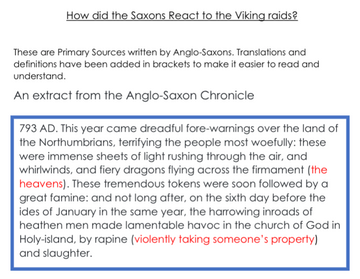
Enquiries are superb vehicles to apply in any number of historical and english skills. From knowledge selection to generating questions and further research. When drip feeding information, like the example below, children naturally use modal verbs to explain the degree of certainty as to if their theory is correct or not.
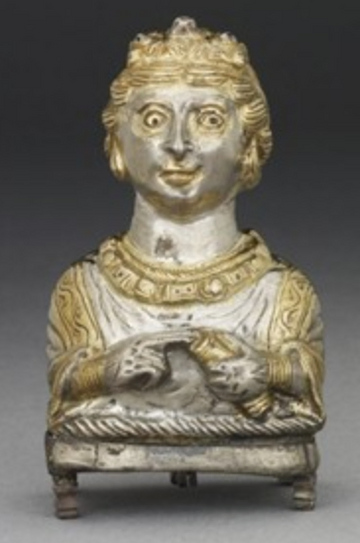
Begin with a seemingly simple question: What is it?
Why do you think this?
Use a scale of certainty to explore how certain they are focusing on use of evidence, modal verbs and
Then, allow them to ask questions to test out their thinking. I answer in one of three ways – tell them, say I don’t know if I don’t or I’m choosing not to tell you the answer because it gives too much away (it is actually a really good answer to show they’re on the right lines).
Add more context by showing different views or adding snippets of related information.
The aim is to learn about how we build up our understanding of the past using a range of sources and techniques. This works well with photos, paintings, artefacts etc and is a great way of hooking children in with a pertinent and engaging starter. Take a look at my historic photos album for more images to use in this way.
There was a clear expectation of quality writing in every subject and the children rose the the challenge and, after a term of implementation, very few needed reminders to incorporate a range of skills, techniques and approaches into their work.
It was a natural step to make use of the classroom displays to help make use of the English skills and concepts and the children became far more fluent at incorporating them into various pieces of work.
We all know that making links between subjects and topics is really valuable and these are several ways in which SPaG skills can be used naturally in history. It also works effectively alongside the principles of the different tiers of language (see: Beck, Isabel L., McKeown, Margaret G., and Kucan, Linda, Bringing words to life, 2002)
The new focus onto curriculum, knowledge, and the broad and balanced curriculum opens up new challenges for us to work towards! How can we we keep progressing?
I’m really interested as to how you embed writing skills into history lessons and topics.
This map really highlights the sheer scale of the operation involved in D-Day itself. The number of men involved on both sides of the channel was unprecedented and is still an astonishing achievement in terms of coordination and application today!
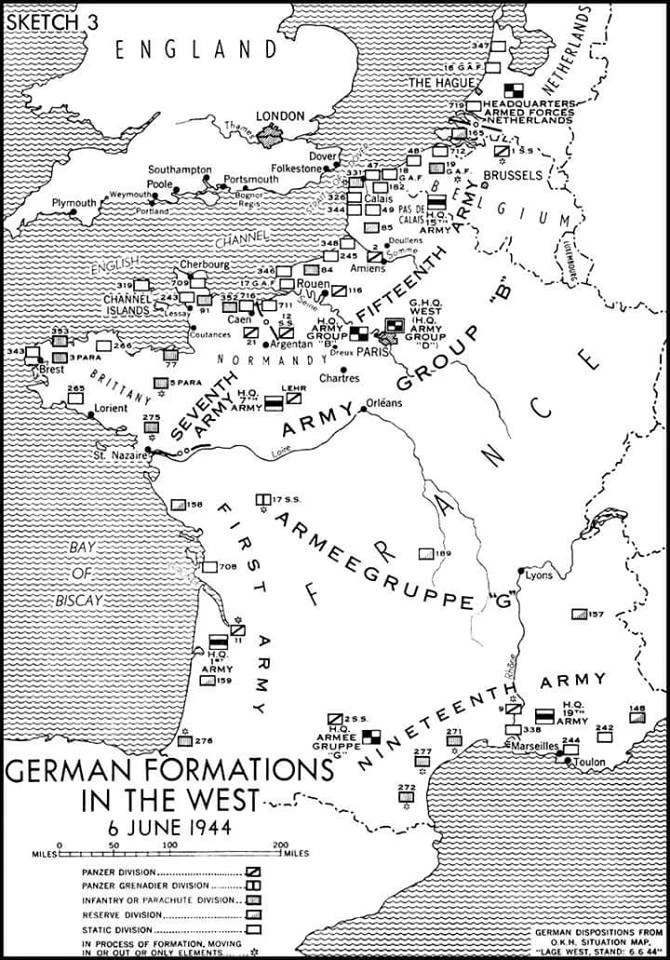
There are a number of ways in which we can commemorate this anniversary in an age-appropriate manner. Some of those suggestions are listed below:
1) How the home front played a part
2) The different roles people worked to make D day a reality
3) The invasion itself
Giving some background information on what Britain was like in the war helps children to understand the impact of war beyond the deaths on the battlefield. It also gives it a appropriate angle for KS1 to teach.
Begin with a photo like the one mentioned shown in the suggested link and use an inference grid to show what we can see from the photo and then, depending on the children’s ability, you can infer their emotions and what they may be thinking.
If children are older, they could narrate parts of this video using the children’s emotions and expressions. This focuses attention on empathy and why they may be moving away with no adults.
If you feel it’s appropriate, it may very well be worth covering the blitz and the damage it caused which caused evacuation. It’s important to keep at an appropriate level but give children enough evidence as to how serious an issue it was. Bomb Sight shows the extent London was attacked and supporting photos of landmarks would support their understanding and Newsround has some great sources to use.
The first thought that appears when we talk about D-Day is the soldiers for obvious reasons I’m sure. The map at the top of this blog shows the extent to which areas were involved and this map from Newsround is a really effective start point.
At home, the work of Bletchley Park is really well known and breaking the enigma codes was vital in ensuring success. The work of Mavis Batey was vital and really worth celebrating and showing the role of STEM subjects in every aspect of life.
The way the Allies sought to confuse and distract the Germans while preparing for D-Day is a really interesting way to look at the idea of a ruse like the Trojan horse.
This video from Newsround from the 70th anniversary provides evidence at an appropriate level and is as much detail as I’d want to go into.
On July 24th, 1969, Apollo 11 landed on the surface of the Moon. Neil Armstrong uttered those immortal words and the world was changed forever! 50 years later, it’s important to commemorate this achievement in school and look at how far our understanding of space has developed and what science, maths and engineering has helped us achieve.
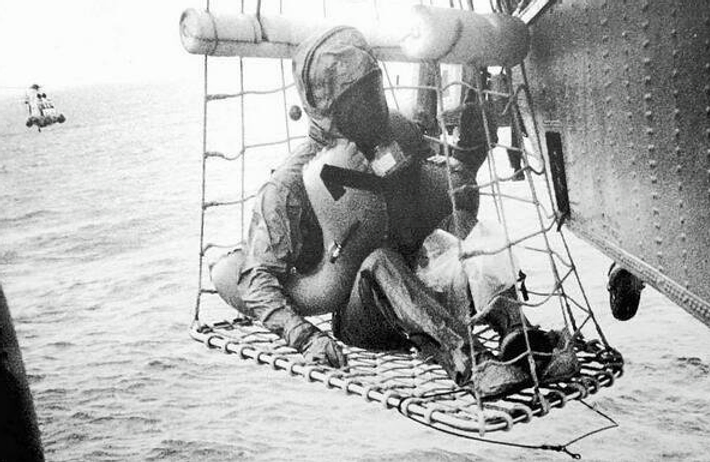
An anniversary assembly looking at the space race between the USA and USSR (Soviet Russia) would be an easy to manage way of teaching children about it.
A day focused on it would cover many aspect of the curriculum with a real and effective context.
Each year group can easily take on an aspect of the event and share them at the end of the day or, alternatively, teach about the story in an age appropriate way.
It fits into both the Key Stage 1 and 2 curriculum in various subjects and, with a bit of creativity, could easily produce some really excellent pieces of work. My initial thoughts include: a collaborative collage of the moon’s surface with the Apollo 11 Eagle stood on the surface, a dramatic exploration of how the people of mission control would feel when all they received from Apollo was radio transmissions using computer equipment less sophisticated than is found in a mobile phone, and analysing the roles that contributed to the mission’s success or listening to the incredible video, photographic and audio sources we have available to use… I could easily go on!
OK… one more, Saturn V is the most complex machine ever built – 3,000,000 plus pieces – definitely worthy of study! Think of the engineering and maths involved in its creation. Where could STEM take us? In this case, to the moon and back!
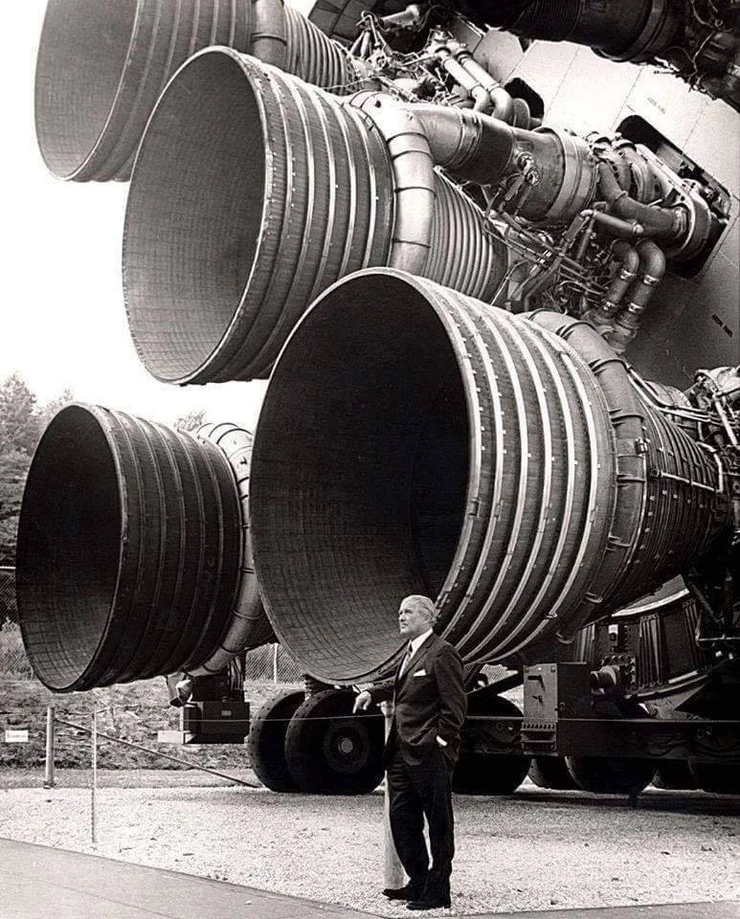
Websites to Consider Using:
https://www.nasa.gov/specials/apollo50th/index.html
https://www.youtube.com/watch?v=kwFvJog2dMw – an extract of President Kennedy’s speech
https://www.youtube.com/watch?v=4cOhZy7dhTo – the countdown to launch including mission control commentary
http://www.spacekids.co.uk/moon/ – child friendly overview of the Apollo programme
https://www.dkfindout.com/uk/space/moon-landings/ – interactive book to explore